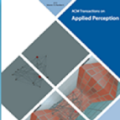Millions of people around the world face motor impairments due to Parkinson's, cerebral palsy, muscular dystrophy and other physical disabilities. The goal of this project is to increase the usable surface-area of devices for users with these disabilities by creating a simple, inexpensive, and portable way to enable high accuracy touch interaction with large surfaces such as a table or even a wall. This project uses a novel approach that analyzes the acoustic signals at four piezoelectric microphones placed on the interactive surface to identify sounds related to the same event (e.g., a finger tap) at each of the microphones. ALTo (Acoustic Localized Touch) uses the results of this signal processing to compute the time difference of arrival (TDOA) across the microphones. The collected TDOA data is used to compute an approximate location of a sound source (e.g., a finger tap) using a collection of hyperbolic equations. An experimental evaluation of a system prototype was used to identify a number of software and signal processing optimizations needed to significantly improve accuracy and create a usable system. The results of the research indicate that it is possible to detect the location of a touch with high accuracy. The ALTo prototype achieves an accuracy of 1.45cm in the x-direction and 2.72cm the y-direction which is within the range for the target usage (i.e., those with motor impairments).
翻译:由于帕金森、大脑麻痹、肌肉萎缩和其他身体残疾,全世界数百万人面临运动障碍。该项目的目标是通过创建简单、廉价和便携的方式,使这些残疾用户能够与表或墙等大型表面进行高精度的触碰互动,从而增加这些残疾用户的可用设备表面面积。该项目使用一种新颖的方法,对放在互动表面的四部压碎电动麦克风的音响信号进行分析,以查明每个麦克风上与同一事件有关的音响(例如手指抽取)。ALTo(声控本地触摸)利用这一信号处理结果计算这些残疾用户到达时间的差异(TDOA)。收集的TDOA数据用于利用一个超偏斜方方程的集测算声音源(例如手指抽听)的大致位置。对一个系统原型进行了实验性评价,以确定一些软件和信号处理优化,以大幅提高准确性并创建可使用系统系统。ALToital Touch)利用这一信号处理结果,计算出到达时间差值的甚低点。在AL-C的频率范围内,可以测测测测测测测测测。





